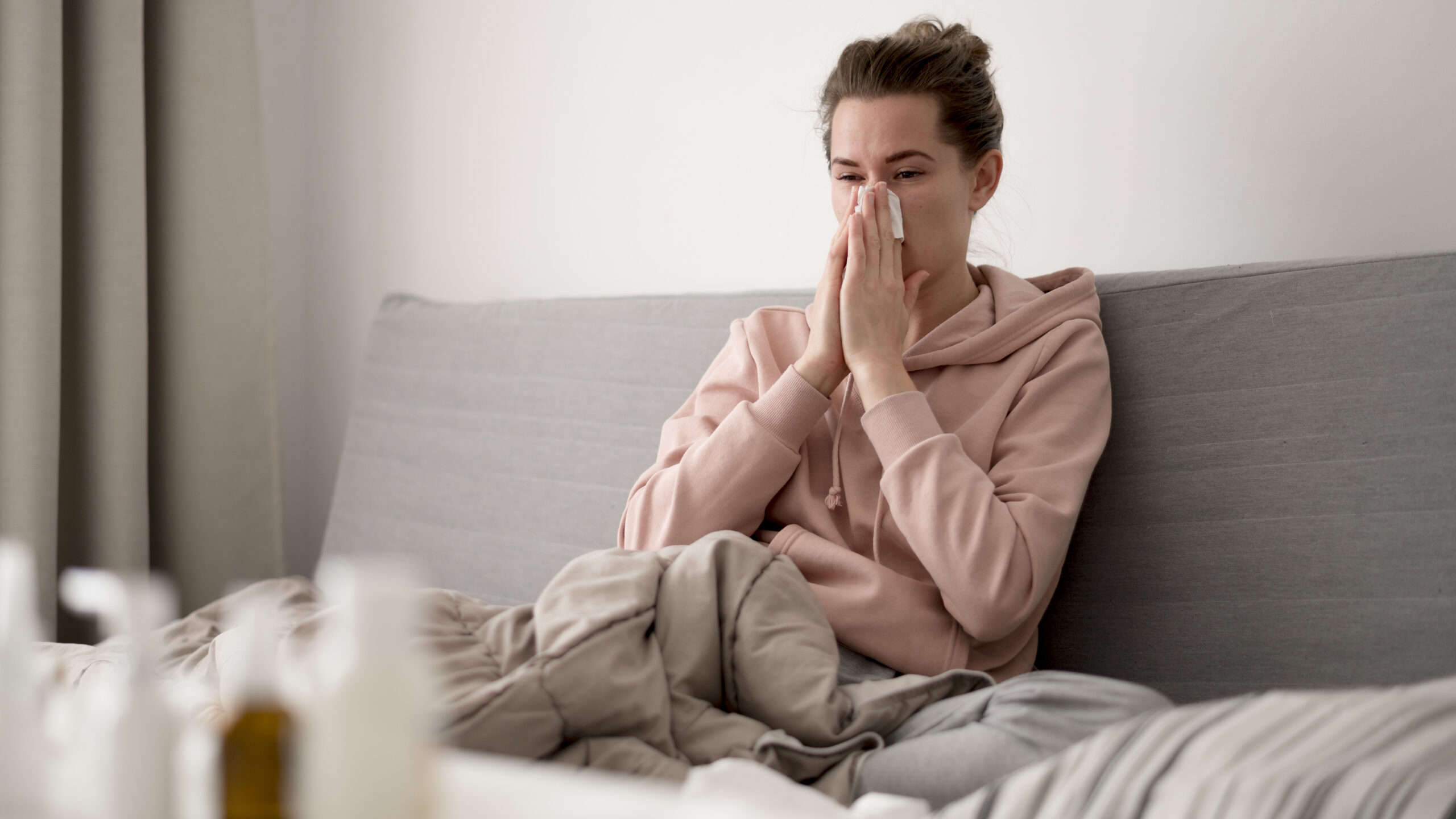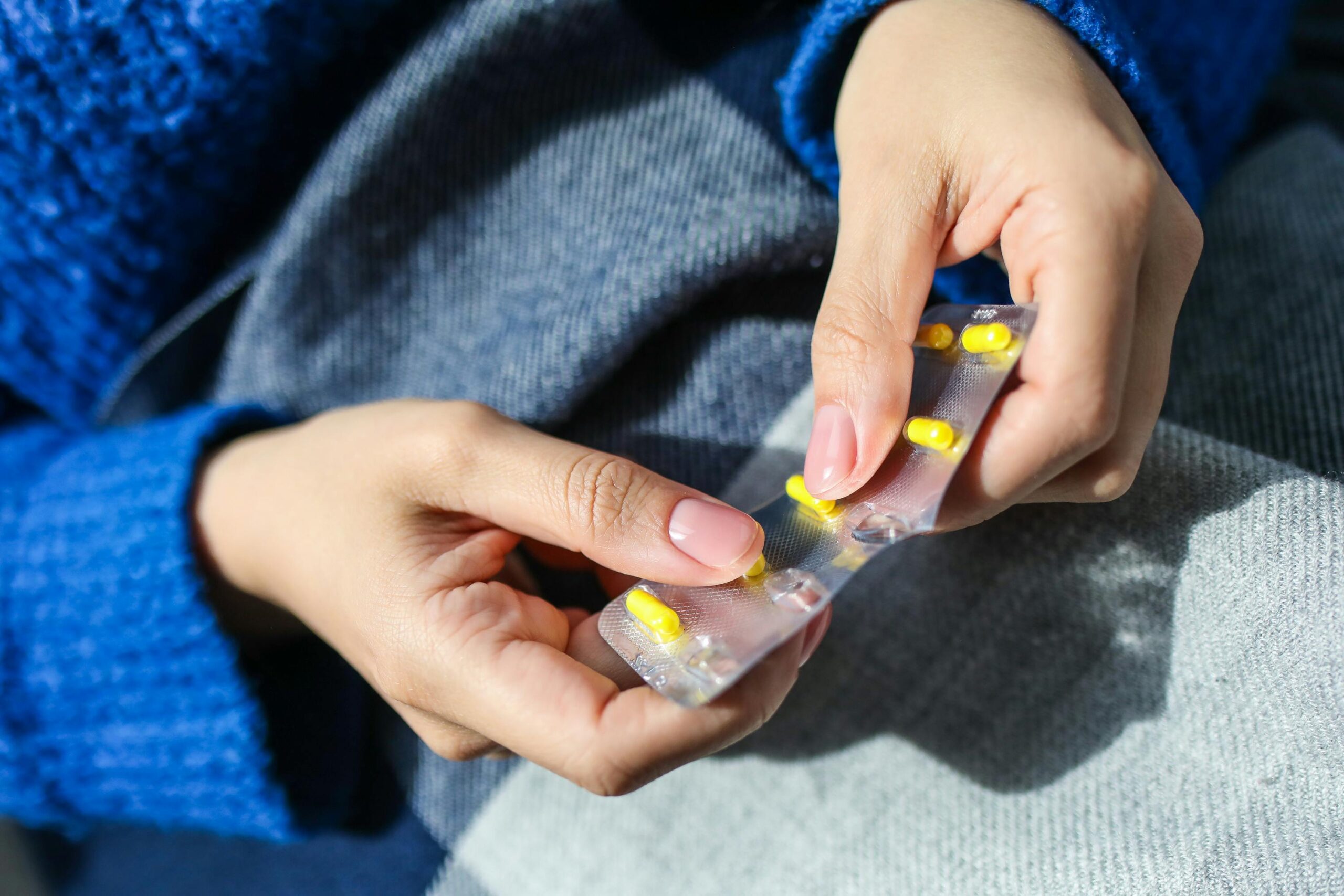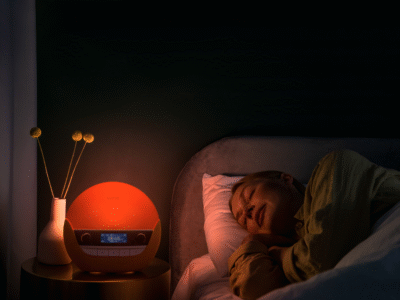Many are claiming that taking over-the-counter allergy medication in the seven days before their period is helping alleviate common symptoms like bloating, anxiety and mood swings — L360 investigates.
Content creators on TikTok have been sharing their experiences of taking antihistamines in the week before their period. They claim it significantly improves the symptoms of premenstrual syndrome (PMS) and premenstrual dysphoric disorder (PMDD), a condition characterised by severe PMS.
Anyone paying attention to women’s health news will be aware of the constant and often gruelling search for effective ways to treat troublesome symptoms of PMS and, particularly, PMDD, which can have debilitating impacts on sufferers’ lives. Unfortunately, there tends to be an oversaturation of advice that either isn’t backed by science or simply doesn’t work for everyone.
However, it turns out there may be some truth to this antihistamine trend. To understand how and why, we first need to look at what histamines are and their role in the body.
What are histamines?
Histamines are chemicals in your body that play a role in the inflammatory response. Released by the immune system, they play a crucial role in supporting the body during allergic reactions.
This is why you take antihistamines when you’ve had an allergic reaction — to reduce the body’s excess histamine levels.

What happens when you have too much histamine in your body?
According to Dr Shirin Lakhani, an intimate health, menopause, hormone health and women’s wellness issues expert, when you experience an allergic reaction or injury that leads to excess histamine in your body, you may encounter symptoms like “fatigue, migraines or headaches, hives, skin issues, digestive problems and nasal congestion, as well as menstrual issues such as irregular periods”.
High histamine levels can have various neurological effects, too. “Histamine acts as a neurotransmitter, particularly through H3 receptors in the brain, which regulate the release of histamine and other neurotransmitters, such as dopamine and norepinephrine,” explains Carolina Goncalves, superintendent pharmacist at Pharmica.
Excess histamine can impact wakefulness, mood and cognition, leading to overstimulation of brain receptors. This may cause headaches, dizziness and increased sensitivity to stimuli. Perhaps unsurprisingly, some of these symptoms overlap with those commonly associated with PMS and PMDD.
The role of histamine in PMS and PMDD
Histamine functions as a neurotransmitter that helps regulate various physiological responses, including digestion, mood and pain perception.
Oestrogen is believed to stimulate mast cells to produce histamine. These levels peak twice during the menstrual cycle: once before ovulation and again in the luteal phase (the latter part of the cycle leading up to menstruation, when PMS and PMDD symptoms will be at their worst).
“During these phases, the oestrogen spike activates mast cells, which are involved in allergic and inflammatory responses, prompting the release of histamine,” Carolina explains. This can amplify symptoms such as irritability, anxiety, mood swings, headaches, breast tenderness and digestive issues. Histamine also increases vascular permeability and inflammation, which can contribute to these symptoms.
As well as this, histamine could affect brain function by interacting with neurotransmitter systems related to mood regulation.
“Histamine can heighten sensitivity to changes in neurosteroids — hormones that impact the brain’s GABA receptors (neurotransmitters that keep you calm) — during the luteal phase,” says Carolina, which could potentially worsen mood instability and anxiety.
Read more: How worried should we be about premenstrual dysphoric disorder (PMDD)?

For those with PMDD, this heightened histamine response is particularly impactful, as it can trigger a feedback loop: oestrogen increases histamine release, while histamine in turn stimulates the production of more oestrogen.
“This loop can lead to exaggerated physical and emotional symptoms in individuals with PMDD, who may already be sensitive to hormone-related mood changes,” says Carolina.
Given that antihistamines can help mitigate the symptoms associated with high histamine levels, and many of these overlap PMS and PMDD, it stands to reason that they could be used to treat symptoms in the lead-up to your period, right?
Can antihistamines help manage PMS and PMDD symptoms?
While no one expects antihistamines to completely cure all symptoms of PMS, especially the more serious and debilitating ones associated with PMDD, both Dr Lakhani and Carolina agree that antihistamines could be a valuable treatment option for those struggling or could at least help alleviate the severity of some symptoms.
Carolina emphasises that, to help stabilise histamine levels, “healthcare professionals often suggest a combination of antihistamines with lifestyle changes.”
Dr Elise Dallas, a GP at The London General Practice, notes, “Common antihistamines include H1 blockers, such as cetirizine and loratadine, which might help with anxiety and physical discomfort, as well as H2 blockers like famotidine, which may improve mood and physical symptoms, especially when combined.”
And, she adds, some antihistamines, especially those with sedative effects, “may assist with sleep issues and irritability linked to PMS and PMDD — and they have been studied for easing menstrual cramps.”
Read more: This is what you should be eating at each stage of your menstrual cycle, according to the experts

However, the anecdotal nature of the evidence makes it difficult to scientifically validate the claims that antihistamines could treat symptoms of PMS or PMDD. There simply hasn’t been enough research carried out.
So, if you’re thinking about hopping on the trend, consult with a healthcare provider first — but you could experience some promising results.
Natural strategies to reduce histamine levels
Although we currently lack extensive scientific evidence on this topic, it’s clear that reducing histamine levels in the body could help manage PMS and PMDD symptoms. Here are some natural ways to reduce histamine in the body:
- Avoid foods that are rich in histamine or contribute to histamine accumulation. This includes fermented foods, dried fruits such as raisins and mangos, certain vegetables such as spinach, cured meats, alcohol and aged cheese such as camembert.
- Incorporate natural antihistamine foods into your diet. Quercetin, found in apples, onions and berries, may help stabilise mast cells and prevent the release of histamine. Foods rich in vitamin C, such as peppers, citrus fruits and leafy greens, can further assist in lowering histamine levels.
- Consider supplements that support the breakdown of histamine, such as quercetin, which is thought to be a natural antihistamine as it stabilises mast cells.
- Enhance the function of diamine oxidase (DAO), the enzyme responsible for breaking down histamine. Nutrients such as vitamin B6 and copper, which are found in foods like salmon, bananas and nuts, may boost DAO activity. While DAO supplements are available, consulting with a healthcare provider before starting any supplements is advisable.













